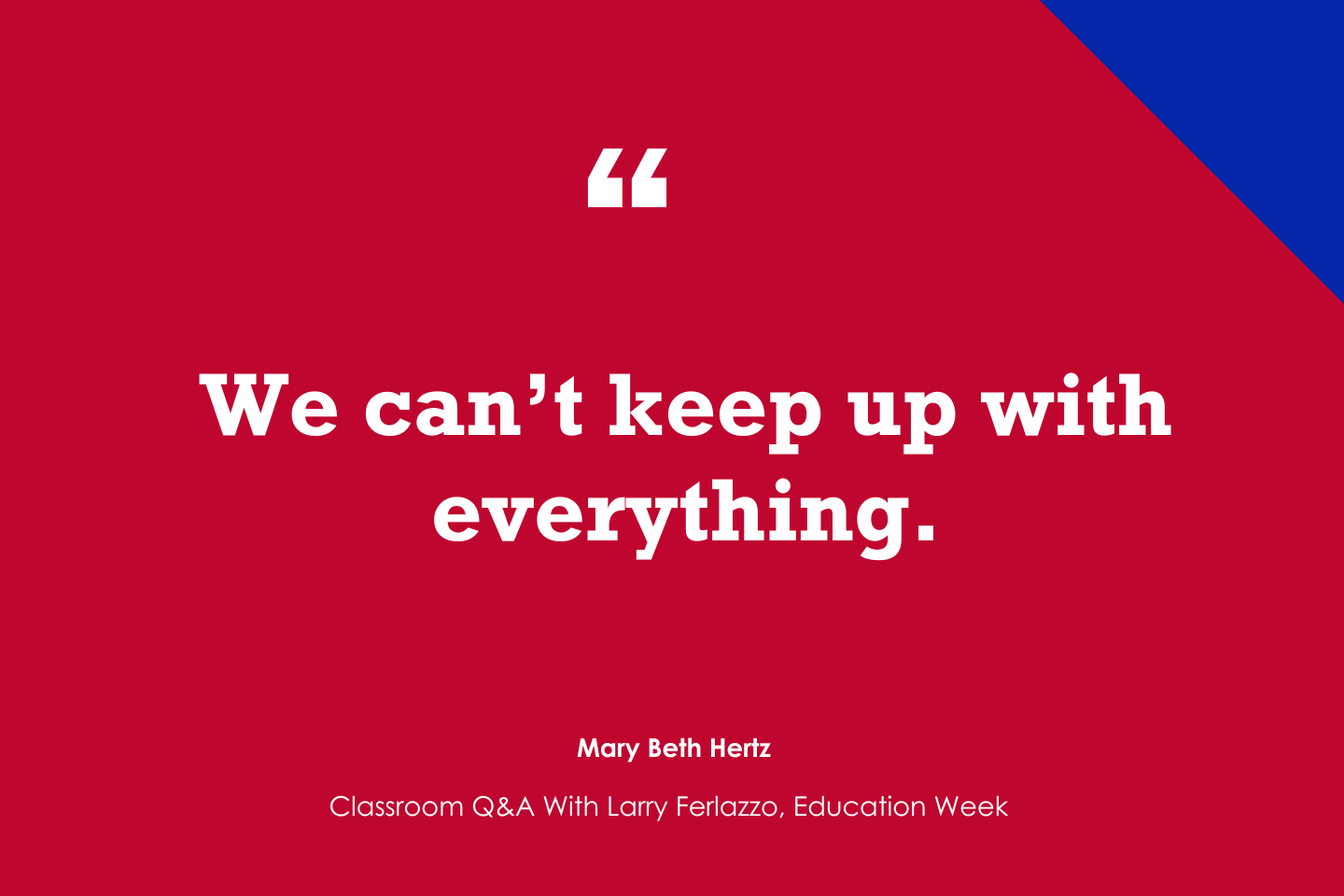Key points:
An innovative approach to literacy yields encouraging results for students
6 tips to help educators support young readers
How we can improve literacy through student engagement
For more news on literacy, visit eSN’s Innovative Teaching hub
I became a reading specialist in 2015, at which point our school’s previous reading specialist was already using an online literacy platform. This was right about the time a leading literacy vendor was rolling out its new literacy program for struggling adolescent readers, so the following year I decided to integrate that program into our English curriculum.
As soon as we did the training for our new program, Lexia PowerUp Literacy, the teachers loved that they could see which students were and weren’t working in the program. Plus, they had the resource hub with everything in it, including all of the lessons. At that point, teachers really began to understand the value of using the literacy tool.
Our county funded our literacy program purchase, and because our elementary schools were already using another program from our literacy partner, they were able to transition to the former as soon as they entered sixth grade. That’s a big plus, because it’s basically a “grown up version” of a literacy platform that they were already used to.
6 ways to boost literacy platform usage
We have almost 1,000 students here in grades 6-8, and they use the program every other day in their PACK class as part of our new “Wit and Wisdom” 5-day/90-minute curriculum program. Everyone is enrolled in it and the students split their time between math and reading.
Here are six ways we’ve been working to increase usage of our literacy platform:
1. Train every teacher. Like many school systems, Stafford County is struggling with teacher staffing and retention. We have so many long-term substitute teachers this year that we’re requiring them to take training for the literacy program as well. We also have PLCs where grade-level teachers meet to discuss student progress. We had regular meetings with our representative and we talked a lot about goal setting for both teachers and students. We had full staff meetings with our software vendor to make sure all our teachers were well-versed in the program.
2. Focus on more than minutes. We really pushed the minutes in the beginning. Then when we had another meeting, we realized that we also needed to see progress in the units, and not just have the minutes. We started to see the minutes accumulating, and we had kids with 383 minutes in “other,” which meant they were watching videos or just letting the time roll through. To solve the problem, we started putting together weekly morning announcements that revealed the top 10 winners in the grade level, in both minutes and units. That really helped, because kids just wanted to see their names up there. They wanted to be in that top 10.
3. Give students autonomy. Having an online literacy platform helps with students’ self-esteem and independence, knowing that they have the power to make changes. They have the power to get in there and fill the gaps they may have that are impeding their reading comprehension. It seems like they know someone’s looking, and they want to do more. I love that about our platform. During the COVID-19 years—when the teachers were looking and making comments because everything was virtual—students would actually try to log in and do more when they knew someone was looking.
4. Use the program as an intervention tool. Last year, our county’s eight middle schools all had a reading skills and strategies class where everyone used our literacy platform. As the class kicked off, people kept coming back to me asking why our students were doing better than some of the other schools. Some principals thought they could put a sub in there every day and that it would be great, and as long as they just logged in there, everything would happen. They didn’t realize all the resources that we have at our fingertips in the platform, including skill builders. When the kids are working, their teachers can see their progress (or lack thereof) and intervene as needed.
5. Recognition is key. We have our own certificates and our platform awards certificates and badges as students achieve their goals. If they’ve finished one strand, they earn one badge. And if they finish two, they earn the second badge. If they finish the whole program, they’re inducted into the Lightning Club. They get a little crown with a wolf (our mascot) and a lightning bolt. We always offer a big prize, which this year was sunglasses with lightning bolts on them. We encourage the kids who have finished to continue working, but we also give students a lot of recognition because they’ve worked so hard. Students who have finished even give others advice on how to excel in the program, which is cute. It’s part of the culture.
6. Get parents involved. It’s really important to make sure all teachers tell the students that “this is part of their instruction,” and that you can’t just leave it out. Students have to know that their teachers are going to see what they’re doing, make comments on their work, and help them when they struggle. We do share the reports with parents, and I think that’s really powerful when we have a child who is struggling. We call their parents and I email the report to them so that they can see where the student is working. We tell them the more time your child spends in this program, the better it will be, and you’ll see them grow.
Success by the numbers
The students who are using PowerUp are also scoring better on their NWEA® MAP Skills®, which even further proves the value of augmenting literacy instruction with a robust, science-backed literacy platform. In fact, over 70 percent of our students using the literacy program finished the 2022-2023 year in intermediate or advanced zones in each of the three strands. Ninety percent of students using it finished the year in intermediate or advanced zones for comprehension.
Other notable stats:
Over 80 percent of the students who met usage targets reached the advanced zone in each of the strands by the end of the year.
Of all 926 middle school students, 55 percent, or 507 students, moved up at least one zone throughout the year and 269 students moved up 2+ zones.
Not only has our literacy platform helped our students advance academically, but it has also helped to build their independence and self-esteem as they fill in the gaps that are impeding their reading comprehension.
I became a reading specialist in 2015, at which point our school’s previous reading specialist was already using an online literacy platform. This was right about the time a leading literacy vendor was rolling out a its new literacy program. Digital Learning Tools, Featured on eSchool News, Innovative Teaching, Literacy, Curriculum, English, IT, literacy, online, PowerUp, reading, students, teachers, Time eSchool News









